Congress & Gerrymandering
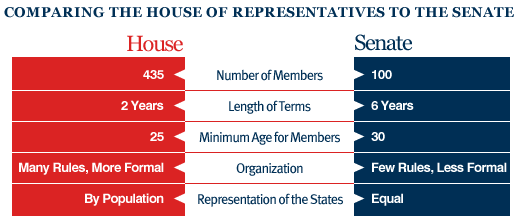
- As established by Article I of the Constitution, the legislative body of the United States is bicameral, consisting of Upper House (The Senate) according to the New Jersey Plan and Lower House (House of Representative) according to the Virginia Plan.
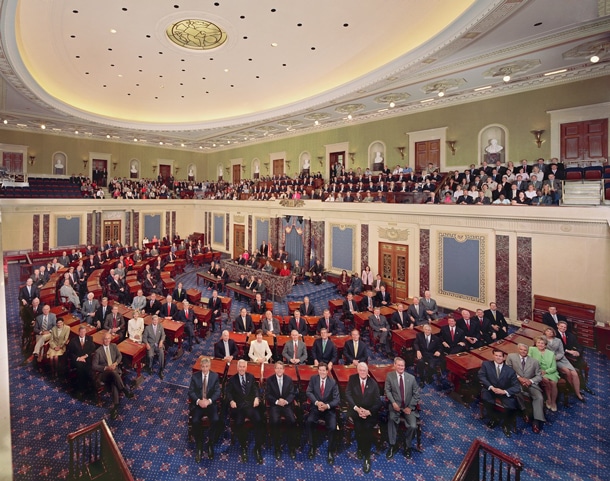
- The number of Senate members is 100 defined as 2 senators per state who serve for 6 years term (equal representation among states), while the number of members in the House of Representative is 435 who serve for 2 years term and it is proportional (based on each state’s population).
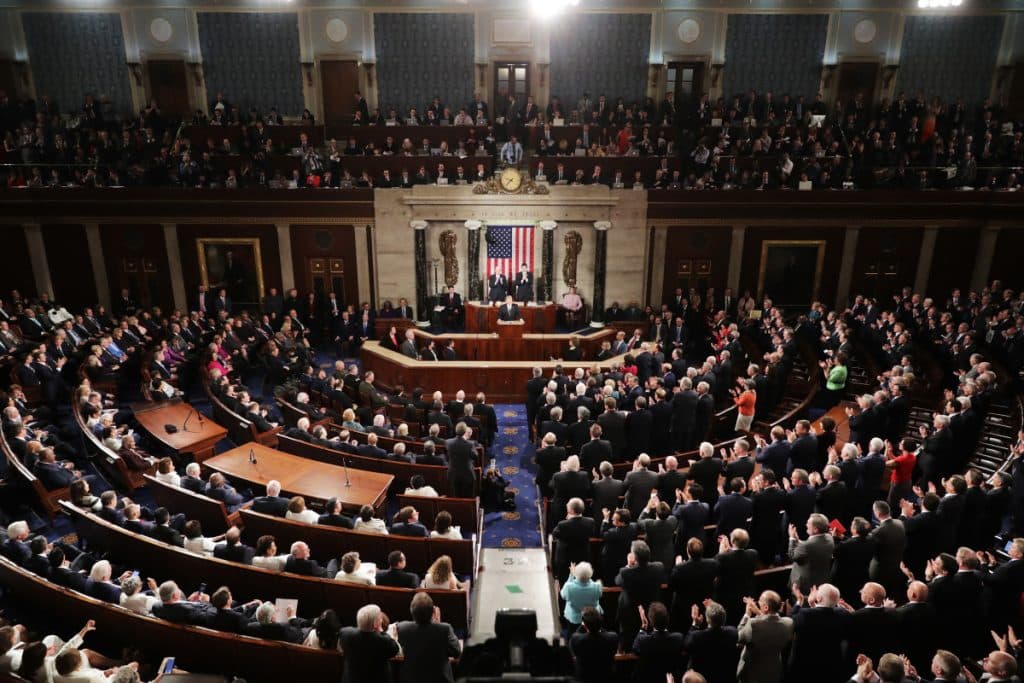
- The House has 435 seats distributed according to each state’s population, as people keep shifting or moving from a state to another, the state may win or lose seats based on the 10 years population count or the (decennial census).
- This mentioned above system is known as reapportionment or redistricting.

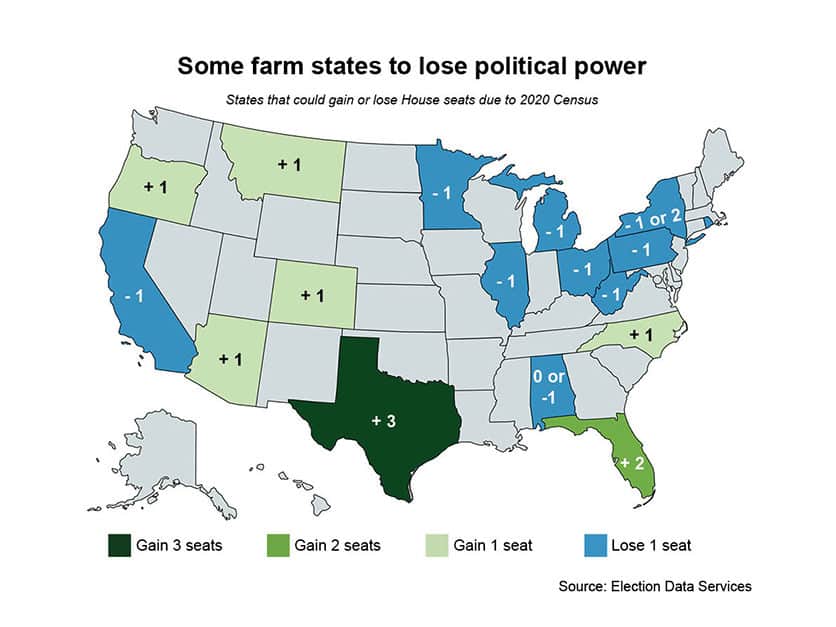
- Because of winning the majority in the House of Representative is very important, political parties in the state and in the nation work together to ensure the redraw of the district in their favor, this strategy became to be known as “Gerrymandering”.
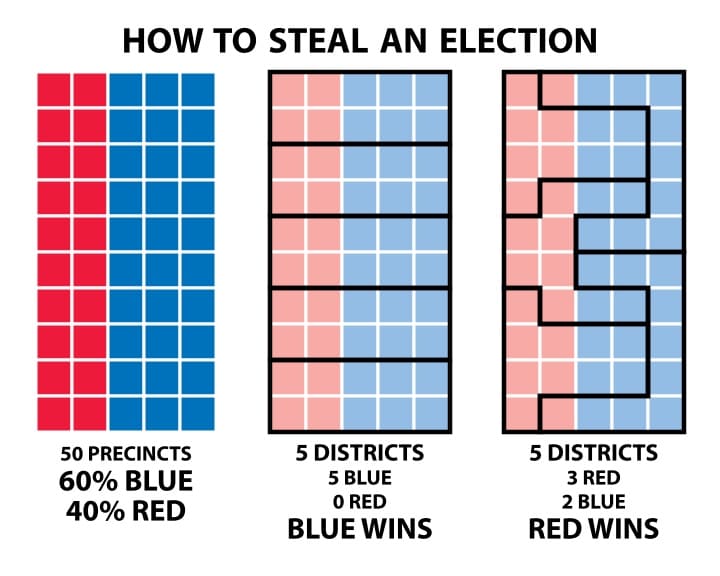
- When the bill of redistricting is passed by the legislature of the state, the governor needs to sign it or veto it, the opposing party can appeal the law to the state or federal court as it was introduced in the case “Baker v. Carr” (Federal courts started hearing redistricting cases).
- The case “Wesberry v. Sanders” advocated that (One person, one vote) as a reaction to unequal district population distribution.
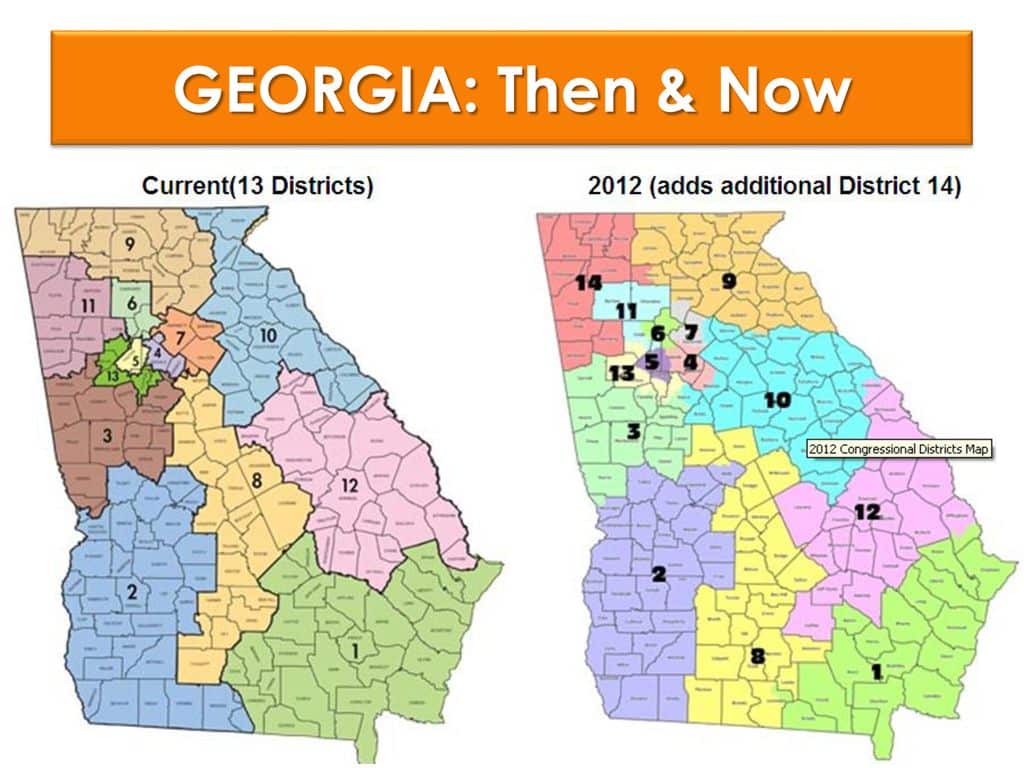
- A second way of redistricting is by creating districts of vastly unequal populations.
- This has been the subject of a series of cases heard by the Supreme Court that established the principle of “one man, one vote.”
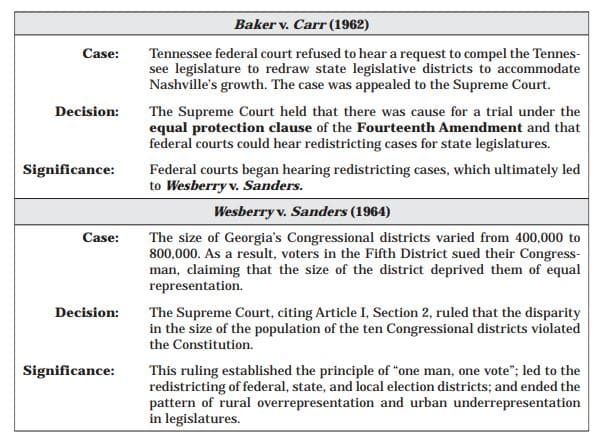
- Shaw v. Reno (1993), was a landmark United States Supreme Court case in the area of redistricting and racial gerrymandering.
- After the 1990 census, North Carolina qualified to have a 12th district and drew it in a distinct snake-like manner in order to create a “majority-minority” Black district.
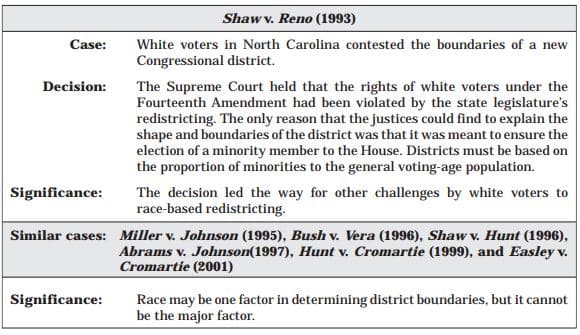

Duties and Powers of Congress
- Both senators and representatives have a number of duties; their major duties are to
- Represent their constituents.
- Make laws.
- Build consensus among themselves as well as their constituents.
- Educate the public about policy issues and defending their party for its positions on policy.
- Congress also oversees the operations of the bureaucracy and may investigate the other branches through its powers of impeachment (the House) and trial (the Senate).
- Both houses share in these duties, but the two houses have separate duties as well.
- The House initiates all revenue bills, and the Senate confirms or rejects presidential appointments and treaties with other nations.
- In fulfilling above, members of Congress also provide services to those constituents with Congressional
staffs routinely fielding requests from voters for assistance in dealing with federal agencies. - Article I, Section 8, Clauses 1 through 18 of the Constitution list the expressed powers of Congress.
- Clause 18, the necessary and proper clause, is the basis for Congress’s implied powers.
- For example, Article I, Section 8, Clause 11 expressly states that Congress has the power to declare war.
- The power to raise troops to fight that war is not directly stated but is implied through Clause 18.
- Another example of an implied power is Congress’s use of the commerce clause, Article I, Section 8, Clause 3, to establish the minimum wage.
- The following are two important Supreme Court cases to know about Congressional powers:
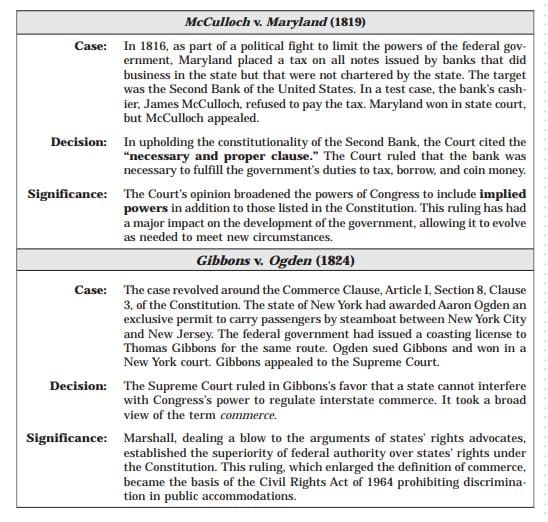
- Those two Supreme Court Cases stated the “Superiority of federal authority over states’ rights.”
- Non-legislative duties of Congress include electoral duties relating to the selection of the president and vice president, should the need arise; legislative oversight of the federal bureaucracy; confirmation of presidential appointments and treaties with foreign nations; and impeachment and trial of federal judges and high-level federal government officials.
- There are some basic differences between the House and the Senate, especially regarding influence and operation.
- The Senate has had more influence in foreign affairs whereas the House has had more influence in budgetary matters.
- The House has less prestige than the Senate, which is considered an elite club.
- Because the House is a larger body, it has a stronger hierarchical leadership.
- A major difference revolves around floor debate. The House Rules Committee determines the rules, including time limits for debating bills in the House, whereas debate in the Senate is not restricted.
